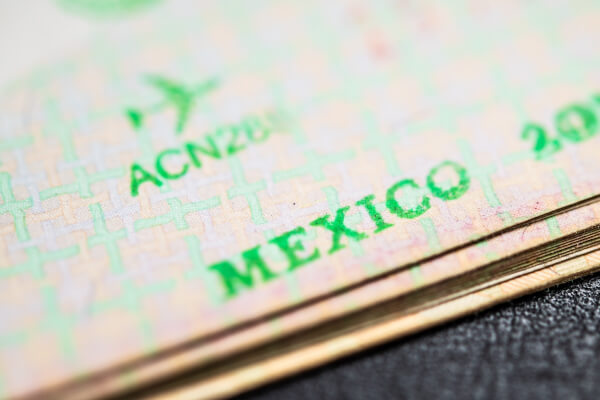Hiring Independent Contractors in Canada: A Complete Guide for Businesses
Learn how to hire independent contractors in Canada. Understand legal rules, tax responsibilities, and how to avoid misclassification with this guide.

Dropshipping is ever more popular these days, and the runaway success of sites like AliExpress is one key reason why. Online stores that use dropshipping can sell items at a healthily marked-up price without needing to buy them in bulk, store them, or even fulfil orders. And AliExpress has so many millions of products on sale that you’re bound to find something you want to sell.
But AliExpress dropshipping isn’t as easy as all that. In this guide, you’ll find out how the process works, and also learn about some of the pros and cons of doing business in this manner.
You’ll discover the Wise Business account too, and how it can help your business save money and operate internationally.
Let’s start with the basics. What is this new way of selling?
Dropshipping is a retail method that’s actually very straightforward. A seller who uses dropshipping creates an online store that looks much like any other – but there’s a key difference. The seller doesn’t have to actually buy any of the products they list for sale.
Instead, every time they get an order, they simply pass that order straight on to their supplier, and the supplier handles the entire rest of the process.
In other words, a dropshipping retailer doesn’t ever have to actually see the items that they sell. They don’t have to order in bulk, they don’t have to look after stock in a warehouse, they don’t even have to fulfil orders. They pretty much just have to list the product on their website.
Unsurprisingly, dropshipping has proved hugely popular with online retailers who don’t want to get too involved with their products, and those who don’t have the funds needed to get started running a more hands-on sort of business.
AliExpress is often called the Chinese eBay, and that’s not a bad description to start with. It’s a vast online marketplace that lets countless sellers offer their products for sale. Thanks to the nature of the global economy, prices often seem impressively cheap from an American perspective. How many products does it have? Some 100 million¹.
Unlike Alibaba, which is a more Amazon-like, customer-facing site, AliExpress has considerable appeal for businesses as well as consumers. Which is where dropshipping comes in.
Is dropshipping allowed on AliExpress? In a single word: yes. It’s well established, in fact, and a lot of the stores you’ll find browsing AliExpress will be well prepared to do this with you.
There’s an art to doing it right, though – like anything else in business, you do need to put the effort in. Here’s what you need to know.
As mentioned earlier, there are positives and negatives when it comes to AliExpress for dropshipping. But before we run through all the pros and cons, it’s worth giving you a clearer idea of what the process actually involves. So here’s an overview of how it all works.

First things first – you can’t sell anything at all unless you have some sort of store to sell it from. This can be any sort of website you like – you could design your own from scratch, you could use a site like Wordpress, or you could use something like Shopify or WooCommerce to get a bit more help with the nitty gritty.
The next step is to work out how you’re going to connect your store to your dropshipping supplier.
And why do you need this, you might ask? Can’t you just connect your supplier and your store directly?
Not really. Or rather, you could, but there’d be a lot of work for you to do as an intermediary, making sure the listings were fully updated all the time, and manually informing the supplier each and every time an order was placed.
The advantage of using an app here is that much of the process can be done automatically. The most famous example of an app that does this is Oberlo, which plugs into Shopify stores – in fact, Oberlo is owned by Shopify. You can use Oberlo to connect with AliExpress retailers.
But there are plenty of alternatives as well. There’s CJDropshipping, Dropified, Importify, DSers, Shopmaster, AliDropship, and many more. Some exclusively deal with AliExpress; some can connect you to other marketplaces as well. Likewise, some are specifically Shopify apps, whereas others connect to different platforms.
You’ll probably have made a start on this already, but now’s the time to go for it. The best way to start is by browsing AliExpress – seriously, set some time aside for this, it’s enormous – and work out the sort of product you want to sell.
Once you’ve found a few items that look ideal, look at who the seller is. This is your potential dropshipping partner. And if you believe you've found it too, time to get to work. You’ll probably be able to use your app for this – Oberlo, Dropified, or whatever you’ve gone for – in order to formally set yourself up with your seller.
And now we’re in business, pretty much. You’ll now be able to select the items you want to sell and list them in your store, as well as to set a price with a markup. When you receive the order, you should be paying the wholesale price for it - and then AliExpress would ship the product to your customer.
Although some aspects of the listings import may be automated, this is a step where that personal touch goes a long, long way. Working out exactly how to sell the products is the part of the process where you really should come into your own as a salesperson. So make sure your listings really sparkle, while still representing the product itself as accurately as you can.
This may seem obvious, but it’s worth emphasizing: just like with any business enterprise, laziness won’t get you very far. True, the whole point of dropshipping is that you have less work than you do running a traditional store, but that really doesn’t mean you can sit back.
Think about your products, think about their listings, think about their prices. Think about marketing, and SEO. Who are your competitors? Who’s undercutting you? Where are your customers coming from, and what else do they want from you?
Dropshipping is a comparatively easy way to start out in running a shop, but don’t forget: you’re still running a business.
So, we’ve seen how the process works, but the key question remains: is dropshipping with AliExpress the right move for you? Here are a few thoughts for and against.
Is this the right path for you, then? It depends what you want out of your online retail business. If you want to focus on setting up a great-looking online store, innovating when it comes to product listing and marketing concepts, and plugging in to a vast marketplace of pre-existing products, then AliExpress dropshipping could be perfect.
If, however, you’re more concerned with selling bespoke or high-quality items, it might not be right for you. You could also be put off by the thought of having to advertise such long shipping times to your potential customers. Plus, there’s the simple fact that you’ll be entrusting so much of your business to a third party – who you’ll probably never even meet. That means that dropshipping with AliExpress probably isn’t for everyone.
Plenty of other dropshipping suppliers are out there, too – whether that involves tapping into another marketplace, or finding a more bespoke supplier to work with. Or of course you could try out doing business in the traditional way, so long as you can afford to buy in bulk. However you choose to proceed, good luck.
Wise Business can help you save big time on international payments.
Wise is not a bank, but a Money Services Business (MSB) provider and a smart alternative to banks. The Wise Business account is designed with international business in mind, and makes it easy to send, hold, and manage business funds in currencies.
Signing up to Wise Business allows access to BatchTransfer which you can use to pay up to 1000 invoices in one go. This is perfect for small businesses that are managing a global team, saving a ton of time and hassle when making payments.
Some key features of Wise Business include:
Mid-market rate: Get the mid-market exchange rate with no hidden fees on international transfers
Global Account: Send money to countries and hold multiple currencies, all in one place. You can also get major currency account details for a one-off fee to receive overseas payments like a local
Access to BatchTransfer: Pay up to 1000 invoices in one click. Save time, money, and stress when you make 1000 payments in one click with BatchTransfer payments. Access to BatchTransfer is free with a Wise Business account
Auto-conversions: Don't like the current currency exchange rate? Set your desired rate, and Wise sends the transfer the moment the rate is met
Free invoicing tool: Generate and send professional invoices
No minimum balance requirements or monthly fees: US-based businesses can open an account for free. Learn more about fees here
*Please see terms of use and product availability for your region or visit Wise fees and pricing for the most up to date pricing and fee information.
This publication is provided for general information purposes and does not constitute legal, tax or other professional advice from Wise Payments Limited or its subsidiaries and its affiliates, and it is not intended as a substitute for obtaining advice from a financial advisor or any other professional.
We make no representations, warranties or guarantees, whether expressed or implied, that the content in the publication is accurate, complete or up to date.

Learn how to hire independent contractors in Canada. Understand legal rules, tax responsibilities, and how to avoid misclassification with this guide.

Learn how to hire independent contractors in Brazil. Understand tax rules, compliance, contracts, and how to avoid misclassification risks.

Learn how to hire and pay independent contractors in Mexico. This article also includes an FAQ and best practices about working with contractors in Mexico.

Learn how to navigate the overseas worker recruitment. Discover legal requirements, sourcing strategies, visa compliance, and tips for international hiring.

Paying overseas vendors is common, but the hidden costs of B2B cross-border payments aren’t. Learn how to simplify international business payments today.

B2B payment processing doesn’t have to be hard. Learn how growing businesses can simplify cross-border transactions, streamline invoicing and get paid faster.